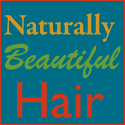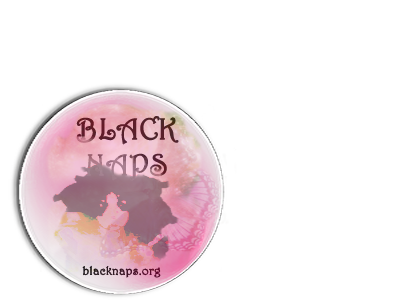Saturday, October 10, 2009
UNDERSTANDING THE DIFFERENCE BETWEEN SHEDDING AND BREAKING...
Hair Shedding versus Breakage
Understanding the difference between hair breakage and shedding is an important part of any healthy hair regimen. Many people use these terms interchangeably to refer to any hair that falls from the head; however, this misinformed language can be a recipe for hair disaster. You must be able to properly differentiate between these two very specific forms of hair "loss" in order to effectively address even the smallest of your hair needs. This article will teach you the difference between hair shedding and hair breakage, and offer strategies to help you combat both hair problems.
What is Shedding
In its truest sense, shed hair is hair that has reached the end of its growing cycle and naturally falls from the scalp along with its tiny, white "root" attached. This is not the actual hair root that is secured deeply within your scalp, but it is the bulb rootor base of the hair strand found on the scalp-originating end. It appears white because the hair stops producing melanin (color) at the point in its growth cycle right before it gets ready to fall. If your actual hair root came out along with the hair, you would no longer be able to produce hair from that same place on the scalp ever again! If a hair does not possess this white root bulb, then it is not a naturally shed hair, rather, a broken one. Shed hair tends to be longer in length than broken hairs which are generally short pieces of varying lengths. According to Halal, after a hair is naturally shed, it may take about 130 days for a new hair to fully emerge in its place.
In general, shedding should not be a major concern for you and should be seen as a sign of a healthy, normal, functioning scalp. There is no need to fear shedding unless it is tied to a medical issue. If you notice rapid hair loss from shedding or hair loss accompanied by a host of other problems, please consult a medical professional. Most shedding, however, is simply nature taking its course.
What can I do about shedding?
You must understand that because shedding is a natural, internal process, it may not respond to topical, external treatments. Some have praised garlic shampoos or "garlic scalp rubs" for reducing shedding, but there has been no clear concensus on the effectiveness of garlic as a remedy for shedding. Shedding is also not easily solved by protein or moisture treatments because it has nothing to do with the hair shaft itself, but is a response to hormonal influences on the hair follicle and is dependent on growth cycles. When a hair completes its life cycle, which generally last s 4-6 years, its final act is the shedding we experience. This cannot be prevented.
Also, our hair naturally cycles in and out of seasonal shedding phases which may last days or weeks at a time in some individuals. Research suggests that peak shedding rates occur during the fall season. A healthy head of hair may shed as many as 50- 100 hairs per day, though I personally believe this amount to be a grand stretch. You should be concerned if your shedding suddenly increases to a rate that was uncommon to you before, or if the shedding seems to be prolonged over the course of several weeks or months
Do keep in mind that there are special periods in the human life cycle where shedding is naturally increased. For example, women who are undergoing a bout of postpartum shedding after having a baby may have to deal with increased shedding for several months until their normal hormone levels return. Other conditions which may increase your shedding rate are:
*styling methods that place stress on the follicles
*birth control/menstrual cycles/menopause
*pregnancy
*heredity (runs in the family)
*crash dieting/ low protein diets, poor diet
*illnesses with high fever as a prevailing symptom
*anemia, thyroid disorders, and a host of other chronic disorders
* certain medications and major surgeries and treatments like chemotherapy
Please consult with a medical professional to diagnose any prolonged, abnormal shedding or other unusual scalp conditions.
Breakage
Breakage on the other hand is not natural, and is an indication of an imbalance of important forces within the hair strand. Broken hairs do not fall naturally from the head, but are typically a sign of mishandling or abuse. In the stages before a hair ultimately breaks, the hair first becomes discolored and experiences cuticle loss. Eventually, the fibers begin to split and ultimately there is breakage.
So what causes breakage? Hair can be weakened and damaged by anything from rough handing and sun exposure to coloring and straightening chemicals. Breakage is also more common with a hair's age; older hairs, usually the hairs nearest the ends, have the greatest tendency to break due to normal wear and tear. When breakage isn't a response to physical manipulation and abuse, it is most often triggered by the lack of moisture in the hair strand. Other types of breakage may be caused by the over- structuring of the hair strand with protein treatments done in excess. A prompt, and proper response to breakage will help you stop breakage in its tracks.
Ambiguous Hair: When Nothing Seems to Work
You handle your hair gently, you've tried the moisture, you've tried the protein . . . but nothing is working! What gives?
Well, occasionally, over the course of your new regimen, you will notice times where your hair and your breakage are simply, "unreadable" and do not respond to your attempts to treat them. Many times, hair that does not respond to treatment is burdened with product buildup. Even the lightest products can accumulate and build up on the hair shaft rendering your moisturizing and protein replacement efforts futile. Other times, the reason hair does not respond positively to treatment is because the underlying problem has been misdiagnosed, and the wrong treatment has been applied (i.e. more protein on hair with protein overload, or more moisture on over-moisturized hair).
The following regimen is a remedy for hair that is not responding to your attempts to treat it. This treatment can also be done as a once monthly maintenance step in your regular clarifying schedule. Since this is a "stripping wash" (you are essentially stripping your hair of products and natural oils and getting it back to the bare essentials), this treatment should be done only once or twice per month, followed by a deep conditioning. Subsequent washings should be done according to your hair's needs, and always with a gentle sulfate-free shampoo.
To begin:
1.) Clarify the hair with a strong ,sodium lauryl and/or ammonium lauryl sulfate shampoo like Pantene Pro-V Purity. Any shampoo that indicates clarifying ability will be fine. Thoroughly saturate your hair with warm running water for 5 minutes to remove any topical debris on the strands and scalp. Apply your shampoo. Allow your shampoo to rest on the hair for five minutes undisturbed to ensure that the surfactants bind properly to dirt and oils. Rinse the shampoo thoroughly, and repeat.
2.) Then, apply a mild protein conditioner like Aphogee 2 min keratin reconstructor or Motions CPR to the hair for about 10 minutes, then rinse.
3.) Next, apply a moisturizing deep conditioner like Crème of Nature Nourishing Conditioner, Kenra Moisturizing Conditioner, KeraCare Humecto, or Elucence Moisture Benefits Conditioner for 30-45 minutes under a plastic cap with heat. *Alternatively, you can combine steps 2 and 3 and apply the two conditioners together and then go under a plastic cap and heat for 30 minutes. Either way should be fine.
4.) At this point, your hair should be cleaned and conditioned and you should be able to determine whether or not your next product step needs to include more moisture or more protein.
5.) Your last step should always include sealing the hair with an oil of your choice.
Now, in this treatment, you have addressed both a protein and moisture need. More attention is given to moisturizing in this treatment because 90% of hair issues stem from a lack of moisture in the hair. Because it is much easier to overdo protein, and much easier to underdo moisture, this treatment errs on the side of caution and assumes there is a moisture deficit. Giving the hair too much moisture does not have the same devastating effects that overdoing protein does, and too much moisture in the hair can easily be corrected.
So, why do we treat ambiguous hair with both moisture and protein?
Your ambiguous hair might actually be caused by a lack of both protein AND moisture at the same time. The light protein step helps insure that moisture binds and remains within the hairshaft by gently reinforcing the cuticle layers. Even if your breakage problems are purely moisture based, you may not be retaining the moisture you desperately need because your hair lacks a sound protein structure.
This treatment should effectively free up the hair shaft and allow you to better determine the cause of your hair problems. In fact, STEP 1, the clarifying step, may provide you with all the information you need without resorting to the rest of the regimen.
Note: If you are attempting to treat an obvious protein overload, this sample regimen will not work for you. If you are looking for a regimen to help with protein overload, follow this treatment but omit STEP 2 that calls for additional protein. At STEP 4, proceed with a moisturizing leave in conditioner and moisturizer of your choice. Keep in mind that protein induced breakage takes a few weeks or several washes to clear up. Though it may not appear to be responding to treatment, each wash is lessening the hold of the protein on your hair. These proteins bind to your hair cuticle, heavier treatments will bind more strongly than others and may take time to completely remove.
Whenever your hair is acting ambiguous or strange, bring it back to square one. Clarify it, and see where you stand!
Is All Breakage Preventable?
In theory. Obviously, in a perfect world, there would be no breakage. However, we do not live in a perfect world and some breakage is bound to happen.Hair is an extremely delicate fiber, though strong, it isn't made out of steel! It would be very difficult to prevent every single, solitary strand from ever breaking. One or two broken hairs are nothing to be thoroughly concerned about. However, it is when you start getting hair here, hair there, 7 here, 9 there-- over the course of a few days that you want to start getting worried about your moisture/protein balance. If you are getting less than 5-7 broken hairs a day through the normal course of arranging your hair, do not fret.
Your job is simply to minimize the breakage as much as possible. Be as gentle as possible when handling and working with your tresses. Try to think of your hair as the rarest, most expensive fine silk head covering. Only handle it with clean, smooth, well manicured hands. No hang nails, or rough dry callouses! Gently maneuver your way through tough tangles and keep your hair soft and moisturized daily. Tie your hair up at night to protect your strands from your nighttime tossing and turning. Treat your hair with care and you will see less hair where it isn't supposed to be!
by, Audrey Sivasothy
Posted by Unknown at 11:21 AM
Labels: shedding or breaking
Subscribe to:
Post Comments (Atom)






















1 comments:
As Salaamu Alaikum wa Rahmatullah:
Jazakumallahu khair for this information!
Muslimah Sukhnah
Post a Comment